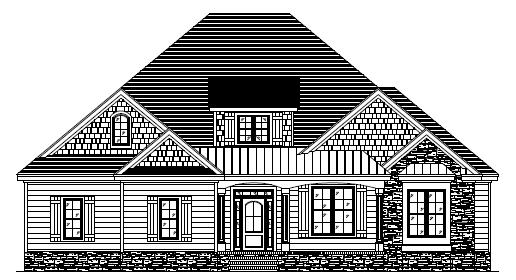Blog
Blog Category - NC Construction
Mild Winter in Southeastern NC vs. Harsh Northern Winters
Categories: NC Construction, North Carolina Living | Posted: January 30, 2013
As many have probably noted, the weather the last few years has been anything but normal. Thoughts of strange weather patterns came to mind last week when the Carolinas warmed up enough for folks to actually get outside and enjoy the rays for a few days.
A recent Fox News article out of Washington, stated on January 28th, “The arctic blast that gripped much of the central and eastern U.S. last week and into the weekend is on its way out and a significant warm-up is on the way to much of the eastern half of the country.” It went on to say:
“Farther to the East, the aforementioned warm front moved through Washington, D.C., and Philadelphia on Monday morning. Some snow, sleet and freezing rain fell at the onset, before a changeover to rain in these cities.
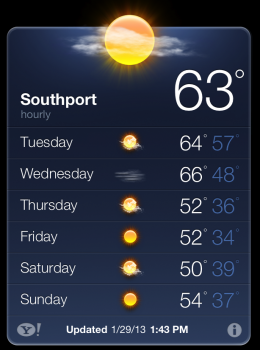
The significant warm-up will take until Tuesday to get into the Carolinas and mid-Atlantic, when temperatures rise into the 60s all the way northward to the Mason/Dixon line.
The 70s will be common as far north as Fayetteville, N.C., on Tuesday.
Even residents of central and northern New England who haven’t experienced a 32-degree temperature in over a week will turn much milder Tuesday into Wednesday.
High temperatures in NYC, Boston, and Albany will rise into the upper 50s and near 60 degrees on Wednesday.
And warm up in the Carolinas, it surely did. Temperatures along the coast reached as high as the upper 70’s. It was out of this world to see people sunbathing in bikinis on the beach in the middle of January.
According to a New York Times article dated January 8 – 2012 was ‘the year of a surreal March heat wave’… and ‘the hottest year ever recorded in the contiguous United States.’ So what does this mean for Southeastern North Carolina? That our already mild winters are just getting even warmer.
Many of the people who have relocated to NC from northern states can agree that the sun shines more often and winter is just more pleasant on the coast. Do you agree?
For Questions or Comments, contact Jeff from Centerline Development at (910) 620-8883 or Jeff@GoCenterline.com
Centerline Construction Chat: LP Gas Tanks
Categories: Centerline Construction Chat, Jeff Satterwhite, LP Gas Tanks, NC Construction | Posted: January 28, 2013
Watch Jeff Satterwhite’s video below to learn about what LP Gas Tanks are, why we need them in Southeastern NC and what is different about them compared to Natural Gas.
Centerline Construction Chat – LP Gas tanks
In this area of NC, there is no natural gas – most people from the north and populated cities are used to natural gas piped to your home with a big blue regulator that regulates the gas pressure in your home.
We rely on LP Gas here since we don’t have that. There is a tank under the ground, they come in different sizes from 300 up to 1,000 gallons. Most homes have between 350-500 gallon tank.
Normal system is a ½ psi for pressure for propane, sometimes it will be a 2 psi system if you have a large requirement for natural gas, if you’re heating off LP or you have a backup generator. Ther is a regulator on there showing it is filled to 85%, never filled to 100% because there is always room for expansion.
This tank has a regulator that will regulate the pressure for the entire house, your gas tank, backup generator, heating and AC, cooking, fireplace, etc. will all work off the LP just like natural gas. The only difference is that gas appliances will have to have the orifice changed, because LP and natural gas are different sized molecules that burn differently so they have a different sized orifice for the actual burner inside the item.
For questions or to learn more, contact Jeff Satterwhite: (910) 620-8883 or Jeff@gocenterline.com
To watch other Centerline Construction Chat tutorials, click here
Click Here to watch our last Centerline Construction Chat video about Painting
2012 Brunswick County Parade of Homes Photos
Categories: Building a Home, Jeff Satterwhite, NC Construction, Uncategorized | Posted: October 31, 2012
Thank you to everyone who came out to the 2012 Brunswick County Parade of Homes this year. It was a great success and we appreciate your attendance!
Check out some of the photos:
For questions or to learn more, contact Jeff Satterwhite: (910) 620-8883 or Jeff@gocenterline.com
Centerline Construction Chat: Backup Generators
Categories: Backup Generator, Brunswick County Home Builder, Centerline Construction Chat, Jeff Satterwhite, NC Construction | Posted: October 29, 2012
Watch Jeff Satterwhite discuss what backup generators are and how they work below.
Backup generators – The generator is about the size of a large suitcase. This one is a 20kw backup generator that runs off a propane tank in the ground, which turns on automatically if you lose power.
When the main line breaker panel loses power, the generator automatically switch changes from line power to generator power. The items on the generator circuit will be up and operational at that point. The process can take 30 seconds to one minute.
When the line power comes back, the automatic switch will change back to line power and run the generator for a two-minute cooling cycle, then turn itself off.
A backup generator is a nice luxury to have. It is not necessarily needed in Southport and Brunswick County since we have underground power which is stable. But we do live in an electric world so it is a nice luxury to have in the case of a heavy storm.
It would have been a nice addition to the recent Sandy that swept through the Northeast.
For questions or to learn more, contact Jeff Satterwhite: (910) 620-8883 or Jeff@gocenterline.com
To watch other Centerline Construction Chat tutorials, click here
To see other videos from Jeff Satterwhite, click here
Gas Vs. Electric Range: 5 Things to Think about and the Pro’s and Con’s
Categories: Brunswick County Home Building, Electric Range, Electrical, Gas Range, Jeff Satterwhite, NC Construction | Posted: July 28, 2012
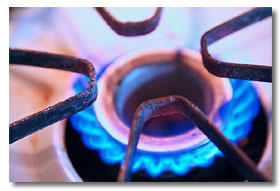 With the large ‘range’ of options available, it can be overwhelming to narrow the field to choosing between gas or electric, and furthermore, deciding on a model. Many people have strong opinions and swear by one or the other. In reality, they will both get the job done and each has its own strengths and weaknesses.
With the large ‘range’ of options available, it can be overwhelming to narrow the field to choosing between gas or electric, and furthermore, deciding on a model. Many people have strong opinions and swear by one or the other. In reality, they will both get the job done and each has its own strengths and weaknesses.
Before You Shop for your Gas or Electric Range
1. Measure Up!
Check the dimensions of the range you’re interested in to help ensure a proper fit. Look for installation instructions on each range for those dimensions.
2. Are you a Multi-task Cook?
For most people, a cooktop with four burners will work fine. If you love to cook, have a large family or entertain often, you may want the professional appearance and flexibility of five or more burners? Just a thought.
3. It’s Getting Hot in Here.
Think about finding a cooktop with a power burner to quickly bring foods to a boil. Or, try a simmer burner to prepare light sauces using low and even heat. If you use basic pots and pans, a dual-element burner is perfect for controlled simmering with small pans, and then you can use the outer ring for larger pans.
4. Cabinet Space?
Ranges can be freestanding, slide-in or drop-in. Freestanding is best if either side isn’t next to a cabinet, whereas a slide-in is best if it’s between two cabinets.
5. Top Chef or Heat and Eat?
Home chefs should look for high performance and precision features. Many prefer the performance of gas or the precision of induction. For the everyday cook, convenience and flexibility may be more important. Consider a smooth-top radiant cooktop for easy-to-clean functionality.
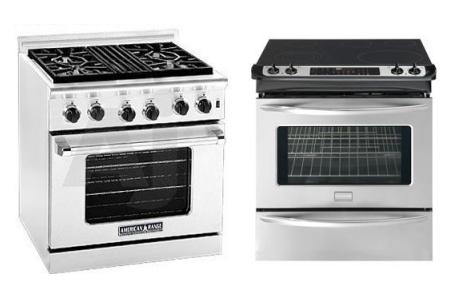
A Deeper Look
A major consideration for anyone purchasing a new kitchen range is cost. Overall, electric ranges are less expensive to manufacture making them less expensive to purchase. Cost will also be significantly less if your kitchen is pre-wired for an electric range. It can become costly if you have to have a gas line run into an existing property.
Electric Ranges
Pros:
- Less expensive to buy and install.
- Easier to clean burners and surfaces.
- Smooth-top electric ranges are more stable for pots and offer additional counter or storage space when not in use.
- Instantly turns on and off every time with the twist of a knob versus gas ranges that may sputter to catch a flame, emitting un-burned and potentially hazardous gas. No igniter or lighter necessary.
- More functions, such as additional fans and grillers, are available than their gas counterparts.
- More even heat distribution when baking.
- Dry heat for optimal oven roasting conditions.
Cons:
- Slower to cool when a burner is turned down or off.
- Subject to power outages.
Gas Ranges
Pros:
- More even stove top heat for cooking.
- Easy to gauge and precisely adjust the level of heat by altering the flame.
- Gas is inexpensive, abundantly available and clean burning.
- Gas ranges are less expensive to operate than electric ranges.
- The heat from a gas flame heats the sides, as well as the bottom, of pans, cooking food faster.
- Able to change temperature rapidly. You can immediately remove the heat when the flame is turned off, so you can still leave food on the stove to rest without continuing to cook.
- Less ambient heat to the rest of the kitchen.
Cons:
- More expensive to buy and install.
- More dangerous. Increased potential for gas leaks, the leading cause of residential fires. If a gas line is damaged or a pot boils over and quenches the flame, a home can quickly fill with toxic, flammable gas. Children or pets are also at greater risk to be burned or catch fire with an open flame.
- Diminished Baking Results. Oven temps are hotter at the top so baking requires rotation and placement farther from heat source. Gas gives off moisture when cooking, creating a humid heat rather than the dry heat required for effective roasting.
References: www.lowes.com and electric-range-review.toptenreviews.com
For questions contact Jeff Satterwhite: (910) 620-8883 or Jeff@gocenterline.com
Centerline Construction Chat: The Irrigation System
Categories: Backflow Preventer, Brunswick County Home Builder, Building a Home, Centerline Construction Chat, Construction Process, Irrigation, NC Construction | Posted: June 16, 2012
Learn about the Irrigation System and the Backflow Preventer from Jeff Satterwhite. In this video, he shows you all the different parts of an Irrigation system, why they’re necessary and how they work. Read details from the video below the video.
Backflow Preventer – Once water has passed through this system, the Backflow Preventer stops water from flowing back from irrigation lines into city drinking water
In this particular area of NC irrigation and drinking water comes from the same source – so in the case that the main line is cut somewhere down the stream the valve creates a siphoning effect that prevents the water that has been in the yard or the yard lines from getting into the drinking system.
An Insulted box must go over the backflow preventer because it will freeze in the winter. Another option would be to remove (shut off) the Backflow Preventer during the colder times of year when freezing can take place.
The cost of a Backflow Preventer is around $300-400 (which is why you want to protect it during freezing temperatures)and it requires installation by someone certified. The Backflow Preventer must be inspected every year by certified inspector to make sure it is working properly.
The control valve – There are a multitude of control valves we use – we mainly use Rain Bird and Orbit. A timer can be set up in a wide variety of programs such as multiple time zones, multiple areas of sprinkling and multiple times of day. This would be for the purpose of going on vacation or hotter/colder times of year.
A dedicated line runs back to the panel so it wouldn’t get tripped off in case there is some other type of GFI trip in the house it won’t cut off irrigation.
Control valves in the box will open when you change settings. You can do a manual start and use them immediately. Spray heads are typically underground and will rise during use. This one (in the video) is a mister head – there are a variety of different heads – such as 180, 90, 360 degree heads and also heads that oscillate back and forth.
For questions or to learn more, contact Jeff Satterwhite: (910) 620-8883 or Jeff@gocenterline.com
To watch other Centerline Construction Chat tutorials, click here
To see other videos from Jeff Satterwhite, click here
Centerline Construction Chat: Simulated Stone
Categories: Brunswick County Home Builder, Building a Home, Cement, Centerline Construction Chat, Construction Process, Corner Stone, Flat Stone, Foundation, Masonry Wall, NC Construction, Simulated Stone, Wood Wall | Posted: May 14, 2012
Watch Jeff Satterwhite in the video below explain the different types of stone that are used in building and how they are used. See the text version below.
Simulated stone
2 types: Flat Stone – for flat wall, and Corner
Several manufacturers’ make the stone. – Eldorado is who makes the stone shown in the video (Owen’s Corning is a company which produces Cultured Stone)
The stone comes in a variety of different colors and styles and is made of a light weight concrete which is created in a mold. Some varieties include Ledger Stone, Field Stone and River Stone.
2 areas stone can be applied to: Masonry wall or Wood wall.
If applied to a Foundation or Masonry wall, a cement coating is put on, let to dry, then another cement coating is applied the back of the stone or to the wall, where it will be stuck to the Masonry wall.
The Corner Stones are done the same way but they go around corners, they’re put in like a puzzle on the wall or foundation.
On the Wood wall, a moisture barrier (like hydro stop) is attached to the wood wall, and a lath is used, which is nailed over moisture barrier. A base coat is then put on to dry. You apply these the same way you would on Masonry wall – Cement material is put on the back of stone with a scratch coat.
These particular stones are only good for vertical surfaces.
If you are using stones in a horizontal area, like stair treads or a porch, you would need to use a natural stone like Pennsylvania Blue Stone because the other products are not durable enough for foot traffic.
Click Here for other Centerline Construction Chat Videos
For more information or questions, go to:
www.gocenterline.com
Contact Jeff Satterwhite: (910) 620-8883 or Jeff@gocenterline.com
LED Lighting for your NC Home: What are the Benefits?
Categories: Building a Home, Construction Process, Electrical, NC Construction | Posted: February 29, 2012
LED Lighting for your Brunswick County Home
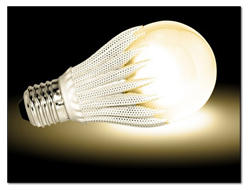
How do they work?
The light-emitting diode (LED) bulb uses a semiconductor as its light source, and is currently one of the most energy-efficient and quickly developing types of bulbs for lighting your home. LEDs are recently being purchased to replace incandescent and other types of bulbs. LEDs are relatively more expensive than other types of bulbs, but are in the long-run end up being more cost-effective because they use only a fraction of the electricity of traditional lighting methods and can last far longer.
Cost: Saving Money and Energy
Many researchers and manufacturers are currently working hard to develop new and better LEDs for consumer use, and consumer prices are falling as the market grows. LEDs for the home are available in many different varieties, ranging from recessed fixtures, track lights, and traditionally shaped bulbs that can be used to replace incandescent bulbs in lamps and fixtures.
A large percentage of the energy that goes into a standard 40 Watt bulb is wasted as heat which is not good for conserving electricity and saving money. LED light bulbs generate relatively little heat as they glow, instead transferring more of their energy directly into light.
The U.S. Department of Energy estimates that rapid adoption of LED lighting over the next 20 years in the United States could save about $265 billion in energy costs and replace the construction of 40 new power plants.
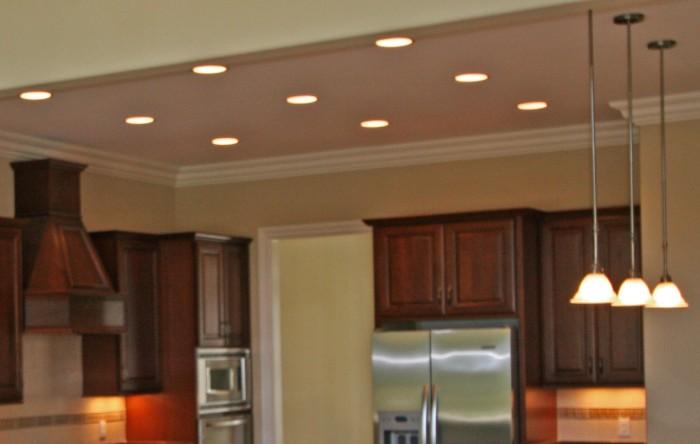 Ceiling Cans
Ceiling Cans
Ceiling cans (or recessed lighting) have become one of the most common styles of lighting for homes in the U.S. They are typically installed in groups simply for symmetry. Ceiling cans are an ideal place for LED light bulbs.
Other options for LED Lighting: Reading Lamps, Art Lighting, Night Lights, Outdoor Lighting, Children’s rooms: the Color Changing Party Light Bulb is particularly popular with children. It is a fun light that changes from red to blue to green at a gentle pace.
More about LED lighting
An LED light bulb can last you up to 50,000 hours. That averages out to 6 hours of light per day for 22 years. Some LED light bulbs are so energy efficient that, depending on how often you use them, they can pay for themselves in just over a year.
The best way to conserve energy is to use less of it. Most LED light bulbs are directional — which means they generally put the light out off the top of the bulb and away from the base. Incandescent bulbs, on the other hand, throw their light all over the place including toward the base — wasting electricity and generating heat. LED light bulbs run relatively cool, so they’re safer to use than fragile, burning hot halogen and incandescent bulbs. LEDs turn on instantly — a welcome difference to CFLs. LEDs do not use mercury like CFLs — so disposal concerns aren’t the same.
For more information on LED lighting for your home or any construction questions,
Contact Jeff Satterwhite: (910) 620-8883 or Jeff@gocenterline.com
or go to www.gocenterline.com
Centerline Construction Chat: Building Stairs
Categories: Building a Home, Building the Stairs, Centerline Construction Chat, Construction Process, NC Construction, Newsletter | Posted: February 28, 2012
Watch the Video below to help understand what type of parts are involved and what process goes into building the stairs in your home.
Stairs – What is involved?
Parts – Post, Tread (on side), Nosing – top of the stair that goes onto landing, Cove Molding, Baluster, Riser
Stairs can be one of the most difficult parts of the house to construct properly and make look good, so choose your carpenter wisely.
The nosing is the top piece and is normally 5 inches wide, and tread is normally anywhere from 10-12 inches wide depending on the travel of the stair. We use red oak on the tread and paint the riser white or according to trim color.
The distance of travel up the stairs can vary ¾ of an inch so it is very close on the code because it’s a trip hazard if it the treads are too far or too close together.
The post – balusters (or pickets as they’re sometimes called) are drilled into the treads and placed with no more than 4 inches of gap between it and the post, or between baluster and baluster – the reason is that small child can fit their head through a space that size if they’re too far apart.
There are many choices in balusters – there are painted balusters, iron, or ornate wood and aluminum balusters. The handrail is usually an oak product or some type of painted product that matches the stairs.
For more information or questions, go to:
www.gocenterline.com
Contact Jeff Satterwhite: (910) 620-8883 or Jeff@gocenterline.com
